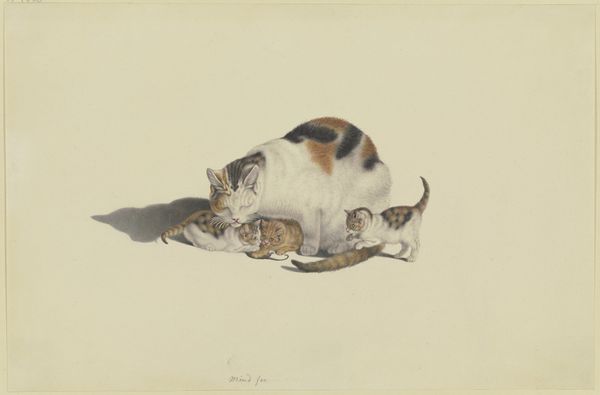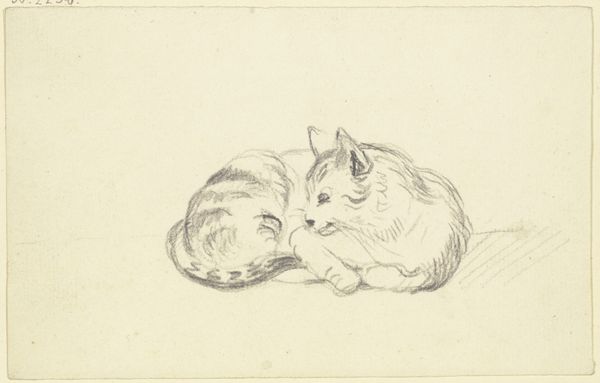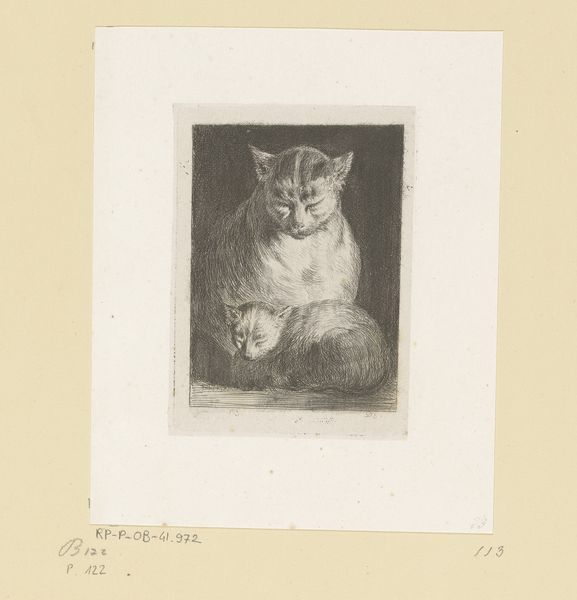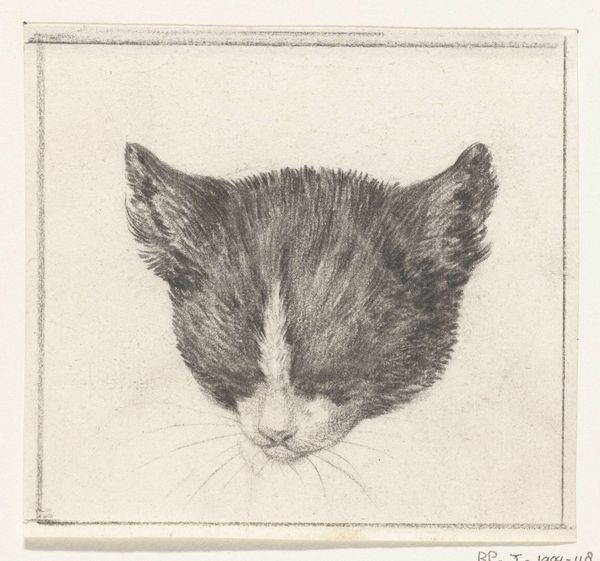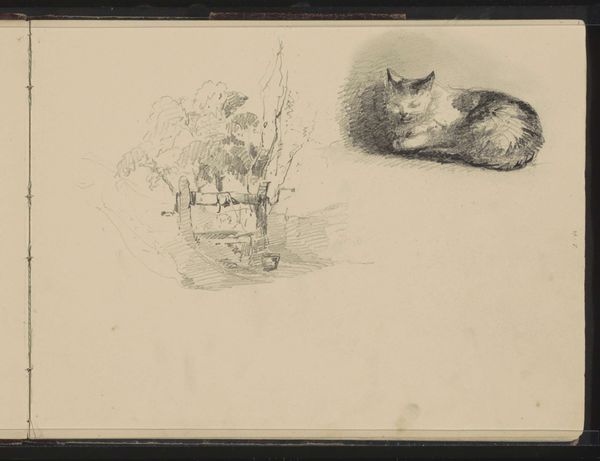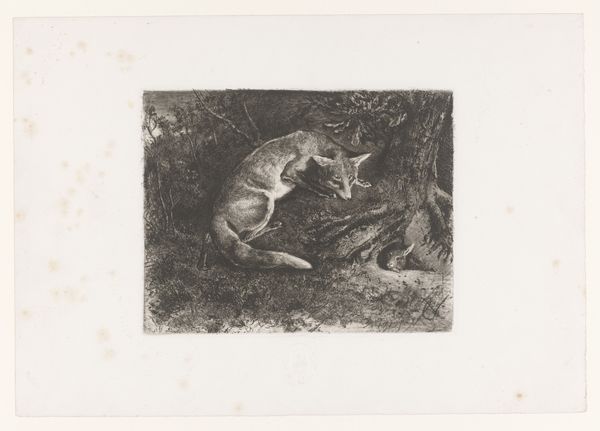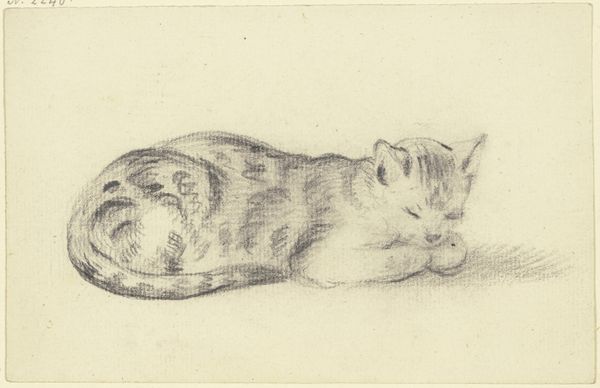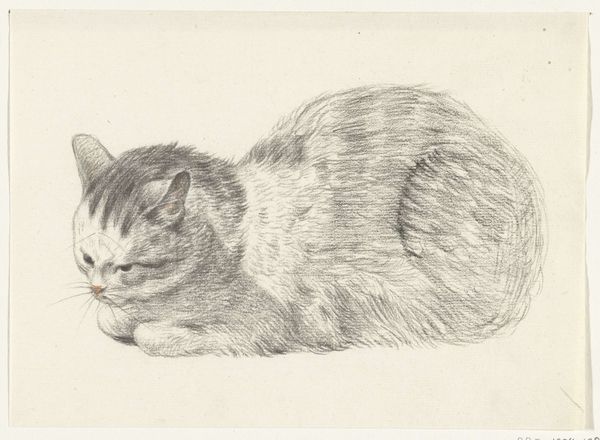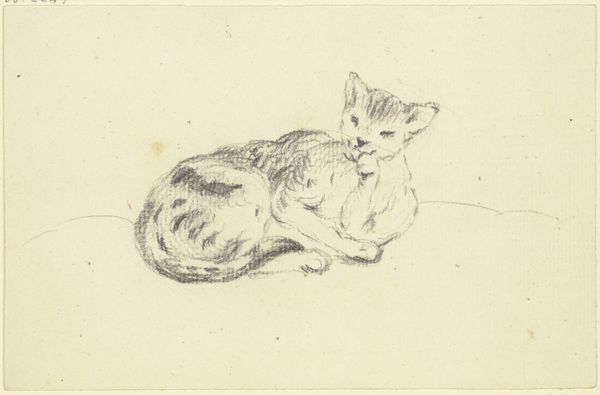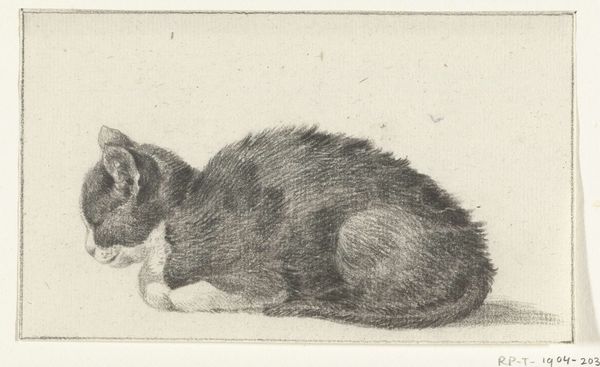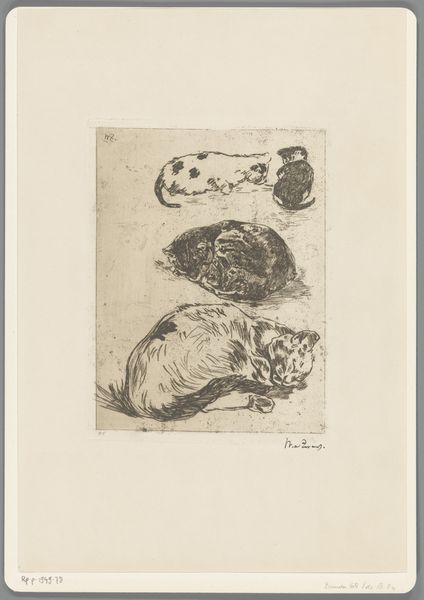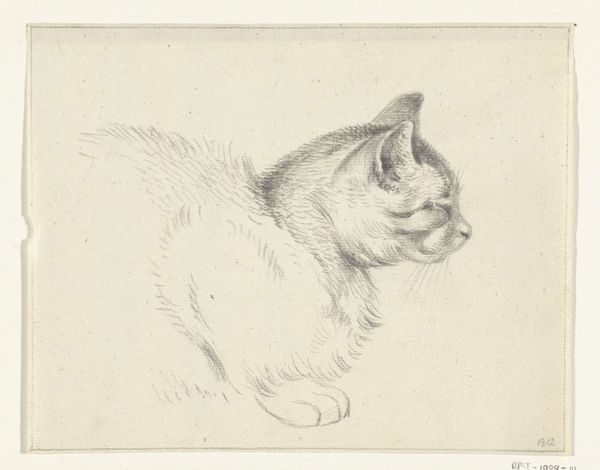
drawing, pencil
#
portrait
#
pencil drawn
#
drawing
#
pencil sketch
#
pencil drawing
#
ink drawing experimentation
#
pencil
#
realism
Dimensions: height 330 mm, width 460 mm
Copyright: Rijks Museum: Open Domain
Editor: Here we have Roelof van der Meulen's "Two Cat Heads," made sometime between 1820 and 1833 using pencil. The starkness of the two sketches on the bare paper creates such an intriguing contrast; one cat seems almost contemplative, and the other looks quite agitated. How do you interpret this work? Curator: That’s an insightful observation. Considering the time, we can ask how animal portraiture reflects broader societal values. Cats, often feminized or associated with witchcraft, occupied a complex symbolic space. The contrast isn't just visual; it’s a dialogue between power and vulnerability, perhaps even hinting at the societal constraints placed on women. Editor: So you're saying that the cats aren't just cats? They might be symbolic of something larger? Curator: Exactly! Van der Meulen was working in a society steeped in patriarchal structures. The artistic focus on domestic animals—especially cats—is hardly neutral. One could see this work as a subversive commentary on the perceived duality of women during that time. Editor: That's fascinating. The fierce expression of the one on the right is really interesting to see under that lens! What do you make of the choice of medium, though? Pencil feels very… intimate, almost. Curator: The medium absolutely matters. Pencil allows for detailed rendering, capturing nuances in texture and expression, yes. But it's also a readily available material. So does its accessibility perhaps indicate commentary on how easily societal roles are assigned, sketched, and perhaps even erased or changed? Editor: That’s made me think about the power dynamics inherent in art and representation. Curator: Precisely! This seemingly simple sketch opens up layers of historical and social meaning, challenging us to consider the gaze through which we interpret art. Editor: It's really opened my eyes. I'll definitely view seemingly simple works in museums differently from now on.
Comments
No comments
Be the first to comment and join the conversation on the ultimate creative platform.
